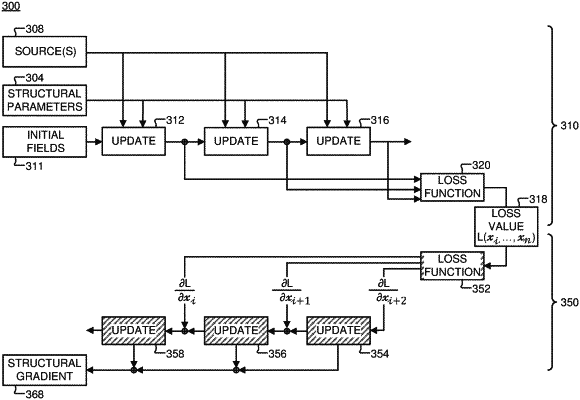| CPC G06F 30/23 (2020.01) [G06F 7/483 (2013.01); G06N 3/08 (2013.01); G06F 2111/10 (2020.01)] | 21 Claims |

|
1. A computer-implemented method for simulating an electromagnetic field interaction with a component, comprising:
defining, in computer memory of a computer system with a finite floating point precision, a loss function within a simulation space composed of a plurality of voxels each having a number of bits of memory, the simulation space encompassing one or more interfaces of the component, the loss function corresponding to a target electromagnetic field distribution for the component;
defining, in the computer memory, an initial structure for the one or more interfaces in the simulation space;
simulating, using the computer system, an electromagnetic field at each voxel using a finite-difference time domain solver to solve Maxwell's equations, wherein simulating comprises determining values for the electromagnetic field at each voxel; and
determining, using the computer system, for each voxel, whether to increase a respective numerical precision of respective values representing behavior of the electromagnetic field at the voxel above a threshold precision by the computer system; and
in response to determining to increase the respective numerical precision of the respective values, increasing the number of bits of memory associated with the voxel,
wherein the increased number of bits of memory is related to increased numerical precision of values corresponding to the voxel in the computer memory,
wherein, as a consequence of increasing the number of bits of memory associated with the voxel, numerical precision for the voxel is increased by a factor corresponding to an increase in the number of bits.
|